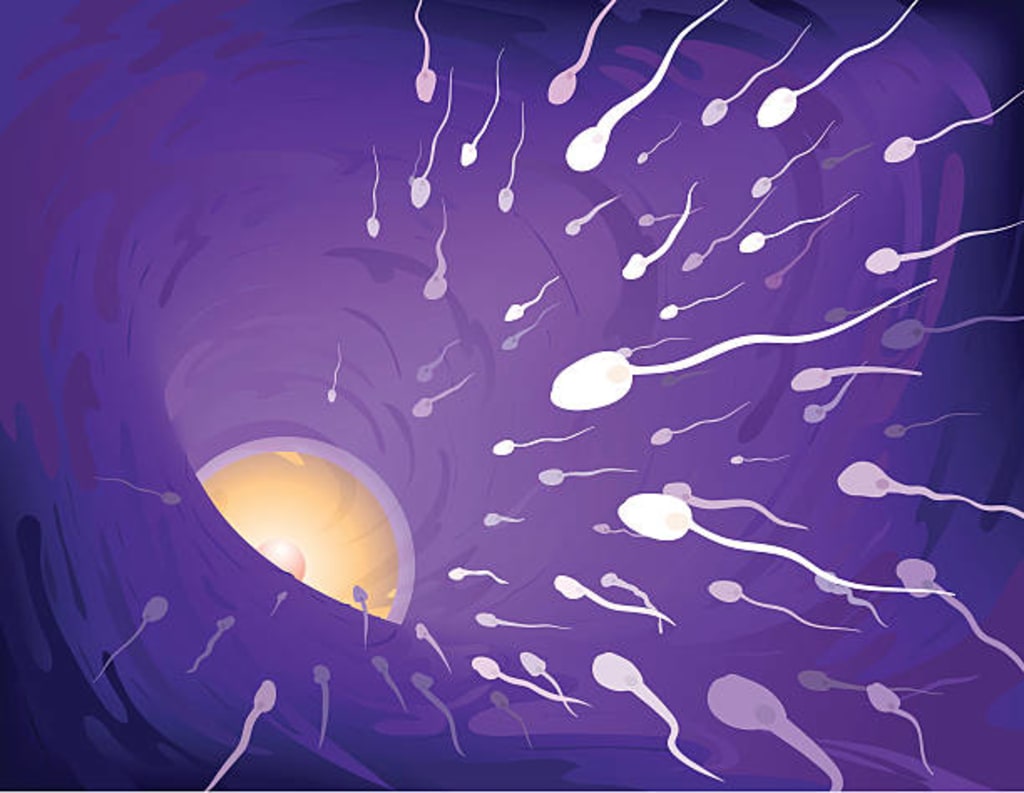The process of fetal development and childbirth
The process of fetal development and childbirth, beginning with the fertilization of an egg by a sperm.

The process of childbirth, also known as labor and delivery, begins with the formation of the fetus in the womb. The process of fetal development begins at conception, when a sperm fertilizes an egg and the fertilized egg implants itself in the lining of the uterus.
During the first trimester of pregnancy, the fertilized egg develops into an embryo and begins to form the major organs and systems of the body, including the brain, heart, and nervous system. By the end of the first trimester, the embryo has developed into a fetus and is about 3 inches long.
The second trimester is a time of rapid growth for the fetus, with the development of the senses, bones, and muscles. The fetus also starts to move, and the mother may begin to feel the baby's movements. The fetus is now about 14 inches long.
In the third trimester, the fetus continues to grow and mature, preparing for birth. The lungs, liver, and immune system are fully developed, and the fetus is now about 16 inches long.
As the due date approaches, the mother's body begins to prepare for labor and delivery. The cervix softens and begins to thin out, a process known as effacement. The baby also descends lower into the pelvis, a process known as engagement.
When the cervix is fully effaced and the baby is fully engaged, labor begins. The first stage of labor is called the dilation stage, during which the cervix opens to 10 centimeters. This is the stage where the mother will feel the most intense contractions.
The second stage of labor is the pushing stage, where the mother pushes the baby out of the birth canal. This stage can last anywhere from a few minutes to several hours, depending on the individual woman and her baby.
The third stage of labor is the delivery of the placenta, which is the organ that provides the baby with oxygen and nutrients throughout pregnancy. This stage typically takes about 5-30 minutes.
After delivery, the mother and baby are usually monitored for a short period of time to ensure that both are healthy and stable. The baby is also checked for any potential health issues and given a thorough examination.
The process of labor and delivery can vary greatly from woman to woman and birth to birth. Some women may experience a relatively quick and easy labor, while others may experience a longer and more difficult labor. In some cases, interventions such as induction or cesarean section may be necessary.
It's important for expectant mothers to have a birth plan and discuss it with their healthcare provider. This plan should include any preferences for pain management, such as an epidural, as well as any preferences for the delivery room environment, such as music or lighting.
It's also important for expectant mothers to be educated on the stages of labor and delivery and understand the potential complications that can arise. This can help the mother and her partner to make informed decisions during the birthing process and ensure the health of the mother and baby.
In summary, the process of childbirth begins with the formation of the fetus in the womb and continues through the stages of fetal development, labor, and delivery. The process can vary greatly from woman to woman and birth to birth and it's important for expectant mothers to have a birth plan and discuss it with their healthcare provider, as well as be educated on the stages of labor and delivery and understand the potential complications that can arise.
During pregnancy, it is important for the mother to receive regular prenatal care to monitor the health of both the mother and the baby. This includes regular check-ups with a healthcare provider, such as an obstetrician or midwife, as well as screenings and tests to check for any potential complications.
Some common prenatal screenings and tests include:
- Blood tests to check for conditions such as anemia, diabetes, and certain infections
- Ultrasound to check the baby's growth and development, as well as to detect any potential birth defects
- Amniocentesis and chorionic villus sampling (CVS) to test for chromosomal abnormalities or genetic disorders
In addition to prenatal care, it is also important for the mother to make certain lifestyle changes during pregnancy to ensure the health of the baby. This may include eating a healthy diet, getting regular exercise, avoiding certain substances such as alcohol and tobacco, and avoiding certain medications.
As the due date approaches, it is also important for the mother and her partner to discuss and plan for the postpartum period. This includes planning for any necessary childcare and support, as well as discussing any potential breastfeeding or bottle-feeding options.
After delivery, the mother will go through a period of recovery and adjustment known as the postpartum period. This can be a challenging time, both physically and emotionally, and it is important for the mother to have support and care during this period.
During the postpartum period, the mother may experience a range of physical symptoms such as bleeding, soreness, and fatigue, as well as emotional symptoms such as mood swings and feelings of sadness or anxiety. It is important for the mother to be aware of these symptoms and to seek help if needed.
In summary, pregnancy and childbirth is a complex process that involves not only the physical aspects of labor and delivery, but also the emotional and psychological aspects of preparing for and adjusting to parenthood. It's important for expectant mothers and their partners to receive regular prenatal care, follow a healthy lifestyle, and have a plan in place for the postpartum period, as well as being aware of the potential complications that can arise.
contact us:
Name:krishnaraj
Email:[email protected]
About the Creator
Honor White Angel
I am a MCA student and also very interested to create blogs and stories.
Please support me guys.
Thankyou for reading my articles.






Comments
There are no comments for this story
Be the first to respond and start the conversation.